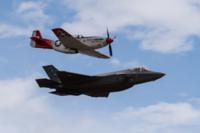Americans: We love our trucks.
In 2023, the car-buying public in the United States took nearly 2.2 million full-size pickup trucks off the new car lot. According to the automotive site Jalopnik, that figure includes 750,789 Fords, 555,149 Chevrolets, 444,297 Rams, 295,738 GMCs, 125,185 Toyotas and 19,189 Nissans.
If that kind of purchasing frenzy – in the face of astronomical prices, no less – doesn’t prove our undying love for these vehicles, I don’t know what does.
It might seem as if trucks have always been part of the American DNA, but the love affair is fresher than you think. Commercially available four-wheel-drive trucks didn’t even exist until after World War II.
Regardless of which brand you’re loyal to or which branch of service you’re in, every modern truck owner owes a debt of gratitude to Dodge and the U.S. Army.
Four-Wheel Drive Was Born on the Battlefield
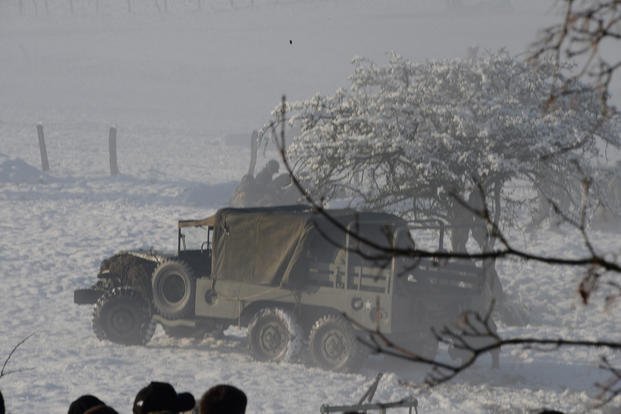
The Army’s relationship with Dodge dates back to the 1916 campaign against Pancho Villa, where the company’s speedy touring cars – primarily employed as staff and reconnaissance vehicles – impressed a young George S. Patton during the first motorized firefight in history in May of that year. Dodge supplied military vehicles throughout World War I and even tinkered with aftermarket, four-wheel-drive kits, but the automaker didn’t have one of its own until it launched the WC series for the military in 1942.
These WC series trucks weren’t as fast or agile as the legendary Willys MB (this video offers a great size comparison of the two off-roading), but they had strength and cargo room to spare. As Motor Trend reports, Dodge built half-ton trucks with the WC-1 to WC-50 designations, and three-quarter-ton trucks with the WC-51 to WC-64 designations. Both sizes shared 80% parts compatibility, which streamlined manufacturing and kept battlefield repairs simple.
The trucks Dodge built for World War II earned the affection of troops with an under-stressed, straight-six engine that produced a modest 230 horsepower, a single-speed transfer case and, of course, four-wheel drive.
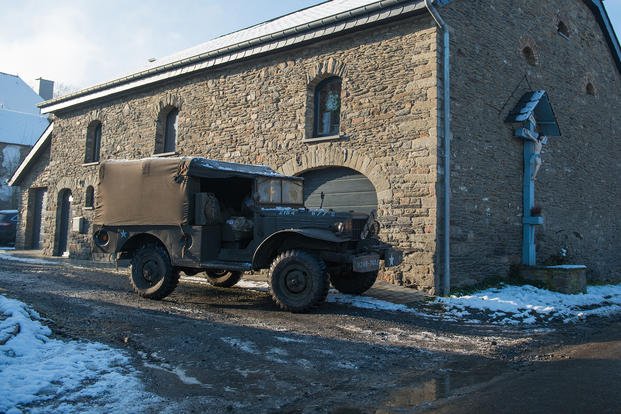
The Dodge WC was so capable that the U.S. Army found all kinds of jobs for it, and the automotive history buffs at Truck Encyclopedia have an excellent repository where you can nerd out on all the facts and figures.
Throughout World War II, the WC platform was a blank canvas for the Dodge. Designers used it to build low-profile convertible troop carriers with a collapsible windshield and open bed, weapon carriers with anything from an M1918 Browning automatic rifle to an M3A1 37-millimeter anti-tank gun, cargo trucks to resupply front-line units, and radio trucks to keep communication lines open during the heat of battle.
One notable variant was the WC-54 -- the Army’s standard ambulance. These were easy to spot by the large, metal cab and giant red cross. According to the National World War II Museum, this configuration was capable of carrying four stretchers or six seated patients to field hospitals at speeds of up to 55 mph.
The Dodge Power Wagon Reinvented the Civilian Truck Market
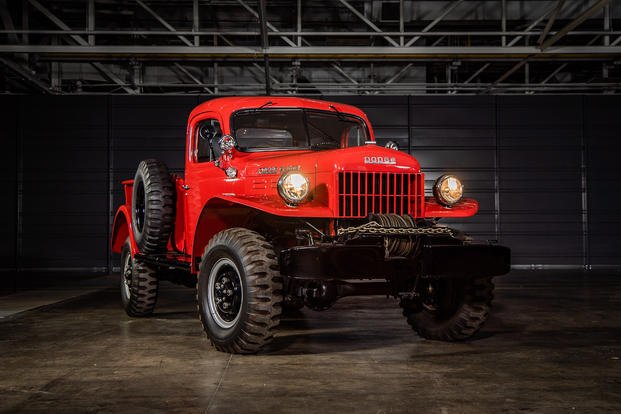
Unsurprisingly, World War II veterans came home from the European and Pacific theaters with a strong appreciation for the WC. According to the automotive site Hemmings, military surplus units were quickly snatched up by farmers, miners, construction workers and other hard-working Americans who jumped at the opportunity to own such a capable vehicle.
Dodge launched the civilian-market Power Wagon as a response to this demand in 1946, and as Motor Trend notes, it was largely unchanged from the U.S. military’s WC series. The truck was essentially a 1930s-era cab on the existing military chassis.
According to Brandt Rosenbusch, a historian with Stellantis (Ram’s parent company), the Power Wagon was predominantly marketed toward utility companies and farmers. Not only could it traverse rugged terrain, ford streams and haul heavy loads, but the truck’s front and rear power-take-off units allowed it to supply power to accessories such as winches, post-hole diggers and farm implements, just like a tractor.
Shockingly, it took the rest of the auto industry (and the buying public) more than a decade to catch on to the magic of four-wheel drive.
According to Car & Driver, Ford didn’t release a four-wheel-drive truck until 1959. Jalopnik reports that General Motors dealerships sold aftermarket four-wheel-drive conversion kits from Northwestern Auto Parts Company as early as the 1940s, but GM didn’t offer a factory 4x4 until 1960.
Once the trend caught on, though, there was no going back. Every truck with power going to all four (or six) wheels owes its success to the innovative Power Wagon. Even the performance-crazed Ram TRX, Ford Raptor, Chevy Colorado ZR2 and Toyota Tundra TRD Pro are modern spinoffs of an old Army truck.
You Can Buy a Brand-New Power Wagon Today
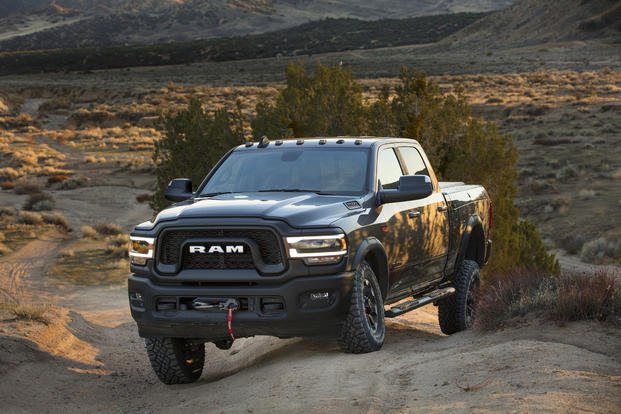
Believe it or not, you can buy an original, wartime Dodge WC. They’re solid vehicles that are still in demand. According to the auction site Classic.com, the average selling price for these trucks is $66,000, with some fetching as much as $260,000.
Most of us are better served by a modern Power Wagon, though. The current iteration carries on the tradition of heavy-duty trucks that can handle tough jobs on unforgiving terrain.
At the heart of the 2024 Ram 2500 Power Wagon are a three-quarter-ton, heavy-duty chassis, a 6.4-liter Hemi V8 making 410 horsepower and 429 pound-feet of torque, and an eight-speed automatic transmission. It’s only available with four doors and a six-foot, four-inch bed.

Off-road upgrades include locking front and rear differentials to improve power delivery on rough terrain and a disconnecting front sway bar for maximum articulation over large obstacles. The Power Wagon shares its 14.2 inches of ground clearance with the rest of the Ram 2500 line.
What’s all this cost? Ram lists a starting MSRP of $68,470 for the 2024 Power Wagon.
The current Power Wagon is a wildly capable truck right off the showroom floor, but there’s always room for improvement. “The Terminal List” author Jack Carr built his Power Wagon to be a go-anywhere, do-anything overlanding rig.
Regardless of which truck you own, keep an eye out for old Dodges at military museums and local car meetups. If you’re lucky enough to spot an old WC or Power Wagon, be sure to give it a tip of the hat and thank it for making the United States into truck country.
Want to Know More About the Military?
Be sure to get the latest news about the U.S. military, as well as critical info about how to join and all the benefits of service. Subscribe to Military.com and receive customized updates delivered straight to your inbox.





